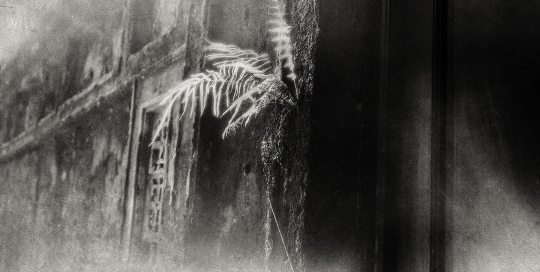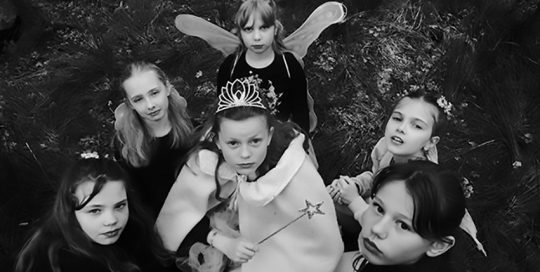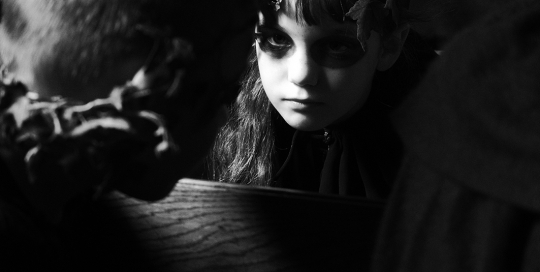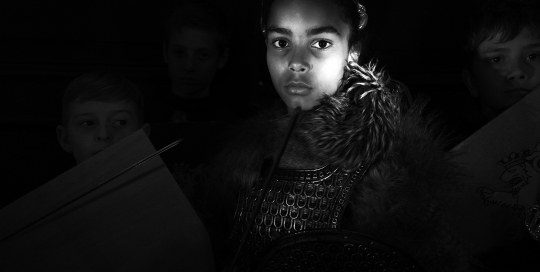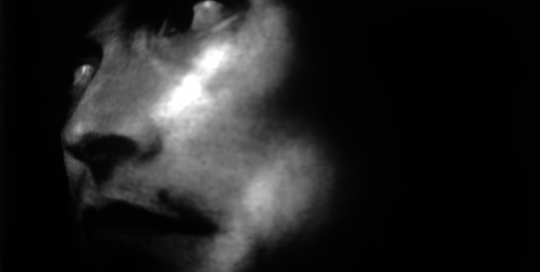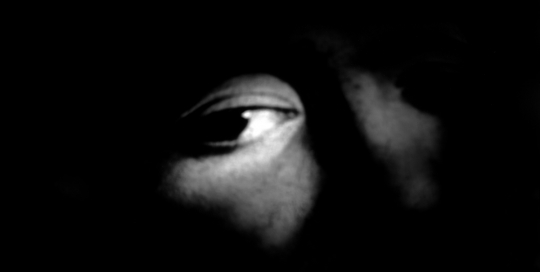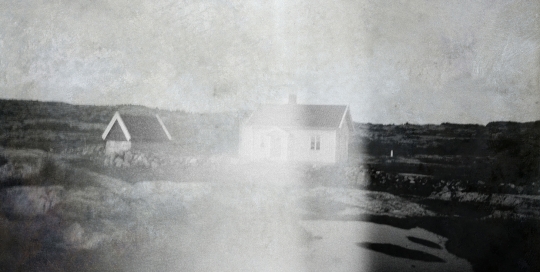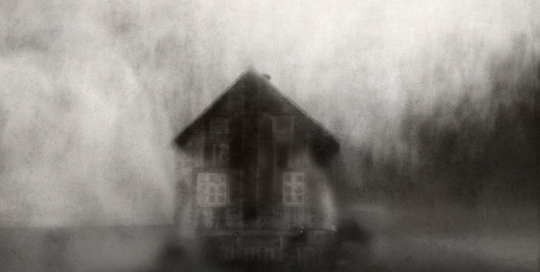LA FLEUR DE CRISTAL / Emmanuel Faivre / École de Villereau
Pédagogie
Mars-Juillet 2023
Dans le cadre du CLEA (Contrat Local d’Éducation Artistique) sur le territoire du Pays de Mormal, nous sommes amenés avec Emmanuel Faivre, créateur sonore et visuel, à co-imaginer et co-réaliser des projets selon les sollicitations et l’envie des partenaires. Ces projets sont toujours menés conjointement alliant Images et Sons.
Avec les classes de CE1-CE2 de Adeline Legrand et de CM1-CM2 d’Isabelle Gillot (École de Villereau), nous avons travaillé autour d’un récit écrit par les élèves La fleur de Cristal.
Il était une fois des petits elfes qui vivaient paisiblement dans une belle forêt, un jour des trolls maladroits envahissent leur village. Ils font alors appel à la grande sorcière des bois, mais Patatra, les trolls en lançant des pierres détruisent la baguette magique de la sorcière. Pour la réparer, il faut se rendre au lac gelé pour y trouver la fleur de cristal. Ainsi, commence l’aventure….
Après une première rencontre et la scénarisation de leur récit, deux journées de tournage pour récolter des sons et images qui ont abouti sur un film photographique et sonore LA FLEUR DE CRISTAL.
L’ARBRE DES TROLLS / Emmanuel Faivre / École d’Englefontaire
Pédagogie
Mars-Juillet 2023
Dans le cadre du CLEA (Contrat Local d’Éducation Artistique) sur le territoire du Pays de Mormal, nous sommes amenés avec Emmanuel Faivre, créateur sonore et visuel, à co-imaginer et co-réaliser des projets selon les sollicitations et l’envie des partenaires. Ces projets sont toujours menés conjointement alliant Images et Sons.
Avec les classes de CE1-CE2 de Perrine Potier (École de Englefontaine), nous avons travaillé autour d’un récit écrit par les élèves L’arbre des trolls.
Un soir, des petits trolls découvrent un étrange écriteau : leur arbre centenaire va être coupé par un décret du maire. C’est sans compter la malice de ces petits êtres fantastiques et des détectives en herbe qui viennent les aider….
Après une première rencontre et la scénarisation de leur récit, une journée de tournage pour récolter des sons et images qui a abouti sur un film photographique et sonore L’ARBRE DES TROLLS.
UNE MYSTÉRIEUSE CARTE / Emmanuel Faivre / École Englefontaine
Pédagogie
Mars-Juillet 2023
Dans le cadre du CLEA (Contrat Local d’Éducation Artistique) sur le territoire du Pays de Mormal, nous sommes amenés avec Emmanuel Faivre, créateur sonore et visuel, à co-imaginer et co-réaliser des projets selon les sollicitations et l’envie des partenaires. Ces projets sont toujours menés conjointement alliant Images et Sons.
Avec les classes de CE2-CM1 de Lucile Lagadec (École de Englefontaine), nous avons travaillé autour d’un récit écrit par les élèves Une mystérieuse carte.
C’est le jour des grandes vacances, dans un vieux pensionnat où étudient deux enfants. L’histoire commence au moment où la maman vient les chercher pour les ramener à la maison. Sur le chemin du retour, ils traversent une forêt sombre et lugubre. Ils désobéissent à leur maman et s’éloignent….
Après une première rencontre et la scénarisation de leur récit, une journée de tournage pour récolter des sons et images qui a abouti sur un film photographique et sonore UNE MYSTÉRIEUSE CARTE.
LA BELLE SAUVAGE / Emmanuel Faivre / École Houdain-Lez-Bavay
Pédagogie
Mars-Juillet 2023
Dans le cadre du CLEA (Contrat Local d’Éducation Artistique) sur le territoire du Pays de Mormal, nous sommes amenés avec Emmanuel Faivre, créateur sonore et visuel, à co-imaginer et co-réaliser des projets selon les sollicitations et l’envie des partenaires. Ces projets sont toujours menés conjointement alliant Images et Sons.
Avec les classes de CE1-CE2 de Lionel Dupureur et les CM1-CM2 de Élise Samain (École de Houdain-lez-Bavay), nous avons adapté un conte écrit par les élèves La Belle Sauvage.
Après une première rencontre et la scénarisation de leur récit, deux journées de tournage pour récolter des sons et images qui ont abouti sur un film photographique et sonore LA BELLE SAUVAGE.
Il était une fois, au Moyen Age, dans un château fort en Auvergne, un seigneur fort
méchant. Sa fille est condamnée à mort par son père car elle a libéré le prisonnier. 20 ans plus
tard… Une Belle Sauvage débarque de nulle part pour combattre les méfaits du seigneur. Le
vieux seigneur est grand, sa longue chevelure brune, ses yeux sont petits et noirs. (suite…)
URSA & USUS / Emmanuel Faivre / École de Bousies
Pédagogie
Mars-Juillet 2023
Dans le cadre du CLEA (Contrat Local d’Éducation Artistique) sur le territoire du Pays de Mormal, nous sommes amenés avec Emmanuel Faivre, créateur sonore et visuel, à co-imaginer et co-réaliser des projets selon les sollicitations et l’envie des partenaires. Ces projets sont toujours menés conjointement alliant Images et Sons.
Avec la classe de CM2 de François Drecq (École de Bousies), nous avons travaillé sur la légende d’Ursa et d’Ursus.
Don’t even wait, just remain silent and alone by Moïna Fauchier Delavigne
Textes / presse
DON’T EVEN WAIT, JUST REMAIN SILENT AND ALONE By Moïna Fauchier Delavigne relishes the silence captured by photographer Aurélia Frey
« Don’t even wait, just remain silent and alone. The world will offer itself to you. »
Photographer Aurélia Frey embraces Franz Kafka’s silence in her own pictures, whether peaceful, as in the two series « Absence » and « Interior Landscapes », or more disturbing, as in « Through the Dark Forest ».
She plays with perception and is intrigued with the idea of travelling to another world and by the subtle boundaries separating reality and the unknown. For over three years, working in Alexandria, she has based her photographs on window displays, beginning with a documentary approach, using plastic mannequins as a vehicle to explore how women are represented in Egyptian society, and then progressing towards more abstract imagery.
She is not the first artist to take window displays as a starting point, though few have imbued the subject with such a floating otherworldliness. The figures appearing in the pictures exhibited at the Mashrabia gallery are seldom static; rather, whether dressed, veiled, bewigged or bald, with make-up or without, they move through mysterious spaces.
« I always wonder where they are looking, » says Frey, who admits to being puzzled by their enigmatic gaze. « I was interested in capturing still time, » she elaborates, « which is why I wanted to avoid any information, such as price tags, that locate the figures in everyday life. »
In « Absence » Frey confounds the expectations of the spectator who sets out to read the images logically. The atmosphere is clearly intended to invoke a sense of wonder as she blurs different fields, playing with the reflections in the glass. But if the result is disorientation, it remains gentle. Lines are smooth and the rendering of colour plastic, the placidity emphasised by the use of matt paper.
So are the mannequins looking at the same thing, the thing we, the spectators, cannot see? What if we were able to look through their eyes? Frey poses these, and other questions, that take us to the edge of a fantasy world.
Frey also takes pictures of real people. « Interior Landscapes » — works produced in France and also showing at the Mashrabia gallery — focus on the ordinary, on people physically present though absent in mind. Next to each portrait is a landscape from the mountainous region of Lozere in central France, close to Grizac, the village where Frey and her family live.
The landscapes are all taken just before sunrise or just after sunset, at that in-between time when life appears to be waking up or calming down. The atmosphere of these fog-drenched micro-climates is rendered in subdued colour. The emptiness she photographs does not give rise to anxiety. Her intention is not to provoke melancholy. According to Frey these are places of meditation, not of anguish.
The portraits all adopt the same technique. « I wait until the people get exhausted and then capture that moment, when they turn inwards, become introspective. » The images contain no clues as to place or time. Some of the portraits are taken in public places — in theatres or else neutral domestic interiors. There are no attempts to hint at personality. The models are anonymous, without histories.
A very different atmosphere is expounded in the 20 splendid pinhole photographs showing at the French Cultural Centre. The pictures were made using a stenopé, a simple box with a tiny hole rather than a lens. Through this basic method Aurelia Frey revisualises a number of Renaissance paintings. « I wanted to play with works by Renaissance masters, including Titian, Leonardo da Vinci, Carpaccio, Michelangelo, Fra Angelico and Signorelli, » she explains. « I wanted to dive into their works and present them in my own way. » The title, Through the Dark Forest, refers to the descent into hell in Dante’s Divine Comedy.
She captures characters and details from the paintings and gives them a new life. Many images are taken from the ceiling of the Sistine Chapel, others from works by the 17th century painter Monsu Desiderio, with whom she feels a particular affinity. But why the Renaissance and the period immediately after? It is, says Frey, a period that has always interested her, not least because it contains so many echoes of earlier mediaeval concepts of hell.
Through the Dark Forest is not the first time Frey has experimented with the simple pinhole camera. Last year she ran a children’s workshop in Alexandria during which the participants were encouraged to explore the city with these simple cameras, concentrating on the theme of water. The results, « Stroll near the Water », were exhibited at the Bibliotheca Alexandrina.
The current exhibition is remarkably powerful, at times harrowingly so. A horse, that in the original painting few would notice, appears to be returning from hell; a face from a Titian is picked out from the surrounding gloom and highlighted in such a way as to lend it impressive strength.
The process the artist uses allows for images to be distorted as she creates a weird sense of volume, using lighting to accentuate the distortions inherent in the process. « Pinhole photography always leaves a margin of uncertainty, » says Frey, who clearly relishes the element of the unpredictable. Frey also sees silence in the stenopés, though it is a fierce silence, the muffling of a scream.
Through the dark forest by Lupe Nunez-Fernandez
Textes / presse
THROUGH THE DARK FOREST By Lupe Nunez-Fernandez Critique d’art pour la galerie Saatchi, Londres
Au milieu du chemin de notre vie je me retrouvais par une forêt obscure car la voie droite était perdue. Ah dire ce qu’elle était chose dure cette forêt féroce et âpre et forte qui ranime la peur dans la pensée. La Divine Comédie Dante Ainsi commence le long voyage de Dante, sa douloureuse initiation au travers des Enfers. Ici, c’est aussi d’un voyage qu’il s’agit, voyage dans la peinture des grands maîtres : Titien, Michel-Ange, Caravage… Au coeur de ce parcours se dévoile une exploration de la matière photographique et picturale. Cette découverte passe par un support que je privilégie, le sténopé. Derrière un miroir déformant, apparaissent ainsi au milieu des ténèbres des figures fantasmagoriques, bestiaire fantastique, visages distendus par un invisible supplice : parade macabre figée dans le silence.
The nuanced relationship between theatricality and space is explored in Aurelia Frey black and white photographs of faces and abstracted natural settings. In a series entitled ‘Through the dark forest’, the young French photographer presents a cast of characters straight of a crystal ball – though contemplated by the viewer, they themselves seem to be haunted by the act of looking, caught in a world of abstract darkness that is half film-noir drama, half nightmarish reverie. But there’s a calmness that runs through these personages’ expressions – as if they had rehearsed it all in front of a reflecting window, or as if they were preparing their own film-still takes, as if they were acting out a plot they cannot change, looking slightly askance through a mirror that simply, immediately changes what’s normal into a play. If there could ever be frank portraiture of fairies, this is what it might look like, partial, vivid, slightly paranoid of being found out. The perfect foil to these masks are the forests whose misty, placid and slightly amorphous nature Frey candidly captures, as richly as if she lived in them. Or, if you will forgive my own personal projections, could they the metaphoric settings for the theatre of torn expressions we saw above?

